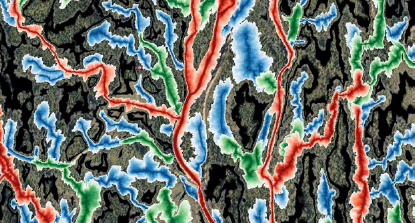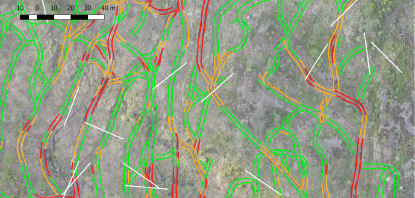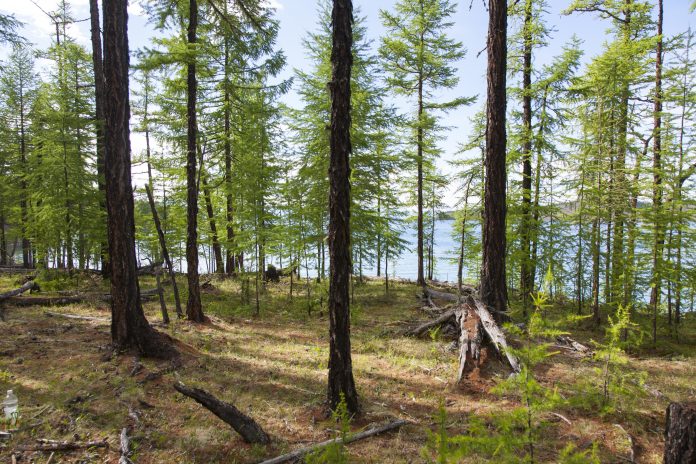Rasmus Astrup from TECH4EFFECT project and the Norwegian Institute of Bioeconomy Research (NIBIO), details the rudiments of improved forest management through new technologies and digital transformation
The vision of the jointly funded BBI JU/Horizon 2020 project, TECH4EFFECT, is to enable the forest sector to strive for greater efficiency continuously and systematically in production and environmental performance. This vision implies that the sector implements the possibilities for efficiency gains in incremental machine improvements and fully embraces the inherent possibilities within the ongoing digital revolution.
Future value- and job-creation in Europe and globally must be shifted towards greener products and services that contribute to an improved or even carbon positive climate and environmental footprint. The realisation of a green and circular European economy is heavily reliant on increased wood mobilisation creating a strong need for improved approaches and knowledge to support sustainable forest management.
Europe’s forests provide a broad spectrum of ecosystem services that must be secured for future generations. Harvesting is the most cost- and fuel-intensive part of forest management and can be detrimental to the provision of a range of these ecosystem services.
Consequently, forest harvesting is also a part of forest management associated with the most public scrutiny, debate, and controversy. From a sustainability and R&D perspective, this makes forest harvesting both important and challenging as relatively small improvements in operations’ management can lead to large gains in cost-, work-, fuel- and environmental efficiency.
The phenomenal efficiency improvements over the last 50 years have largely been driven by mechanical-technical developments such as the transition from handsaws and chainsaws to current fully mechanised harvesting systems.
Current technologies and methods are reaching a high degree of maturity, and the potential for improved efficiency within the current paradigm can be argued to have come close to saturation point.

At TECH4EFFECT, we envisage that the next efficiency leap in the forest sector will be enabled through digitalisation, and data-driven and knowledge-based management combined with incremental technical improvements.

Multiple approaches to reduce site impact
Today, environmental performance must become an integral part of the normal performance evaluation for forest machines and operations. While large and heavy forest machines have led to substantial gains in production efficiency, they also come with the inherent potential to compromise soils and can impact on the long-term sustainability of forests.
New digital and technical solutions can contribute to preventive, yet economically feasible ways of reducing environmental impacts of harvesting by (i) Avoiding damage through knowledge management; (ii) Avoiding damage through the adoption of appropriate technologies and work practices; and (iii) The development of improved methods for quantifying and monitoring site damage, essentially providing feedback to the first two categories.
Modern trafficability maps mitigate soil impact
The widespread and expanding availability of aerial laser scanning data has allowed for the generation of nationwide yet detailed digital terrain models. These provide a reliable basis for modelling how water is likely to accumulate above and below ground.
For example, the cartographic depth-to-water (DTW) map has been widely demonstrated in an operational setting in the TECH4EFFECT project. These were operationalised through the TECH4EFFECT Mapping App, which enables machine operators and operations’ managers to visualise their position and options in relation to the DTW map, as well as record and upload any features of concern or interest.
These maps can be used when planning and carrying out a harvesting operation, adhering to the principles of sustainable forest management, communicated in a series of TECH4EFFECT blogs, which can be read HERE.
Steep-terrain traction winches reduce wheel slip, soil damage
There has been a marked increase in the tethering of ground-based harvesting systems on steep slopes, allowing these machines to operate safely in areas, or at a much steeper gradient than they otherwise would.
The TECH4EFFECT project has carried out trials using traction-assist winches on both steeper and flatter terrain in an effort to reduce wheel slip and thereby soil shearing and rutting. This also contributes to a safer working environment and allows for leaving more branches and tops on the ground to retain the soil and regulate water flow.
Drones monitor site impact
Photogrammetry based analysis can provide an accurate representation of the soil surface and can be used in either the measurement of a specific rut or in the overall monitoring of a harvesting site.
In TECH4EFFECT, photogrammetry from unmanned aerial vehicles (UAVs) has been used extensively in quantifying the state of the site after harvesting. A desktop sampling procedure was developed and compared with conventional field surveys of site impact, making it possible to fully assess site disturbance.
Increased efficiency through digitalisation, digital tools
Digitalisation is characterised by a series of enabling technologies that, when applied and connected, change the way that we organise society and produce goods and services. The enabling technologies all generate vast amounts of data, and the ability to transform data into actionable insights is a cornerstone for digitalisation.
The innovation potential of the enabling technologies is realised when they are applied to improve or rejuvenate existing processes or to create disruptive new business models. In the forest sector, there is a significant innovation potential by the application of digital solutions.

A key TECH4EFFECT output, SILVISMART is an example of such a digital innovation in the forest sector. Forest machines collect data about the performance of the individual machine and operator, as well as key information about the forest, and SILVISMART turns this data into concrete and actionable information accessible through a simple web-based dashboard. The SILVISMART video can be viewed HERE. SILVISMART is developed to connect different actors in the value chain and is designed to ensure data integrity for all stakeholders. This idea of safe and seamless sharing of information between actors is one of the key areas where digitalisation will lead to efficiency gains, as was communicated in the BeSustainable article which can be read HERE.
SILVISMART is developed to become part of the growing ecosystem of digital solutions in the forest sector. Smartphone-based apps for automatic transfer of data between the machines and SILVISMART have been developed (Silvismart Upp) as well as for mapping driving patterns (Tracking app). Further, SILVISMART has an open application programming interface (API) which allows for connectivity to existing IT systems both for forest owners and contractors.
Digitalisation has a large potential to further support sustainable forest management in Europe. Digitalisation of the forest sector can become a continued European success story through increased collaboration across borders as well as between industry and research organisations.

This project has received funding from the Bio Based Industries Joint Undertaking under the European Union’s Horizon 2020 research and innovation programme under grant agreement No 720757.
Please note: This is a commercial profile











